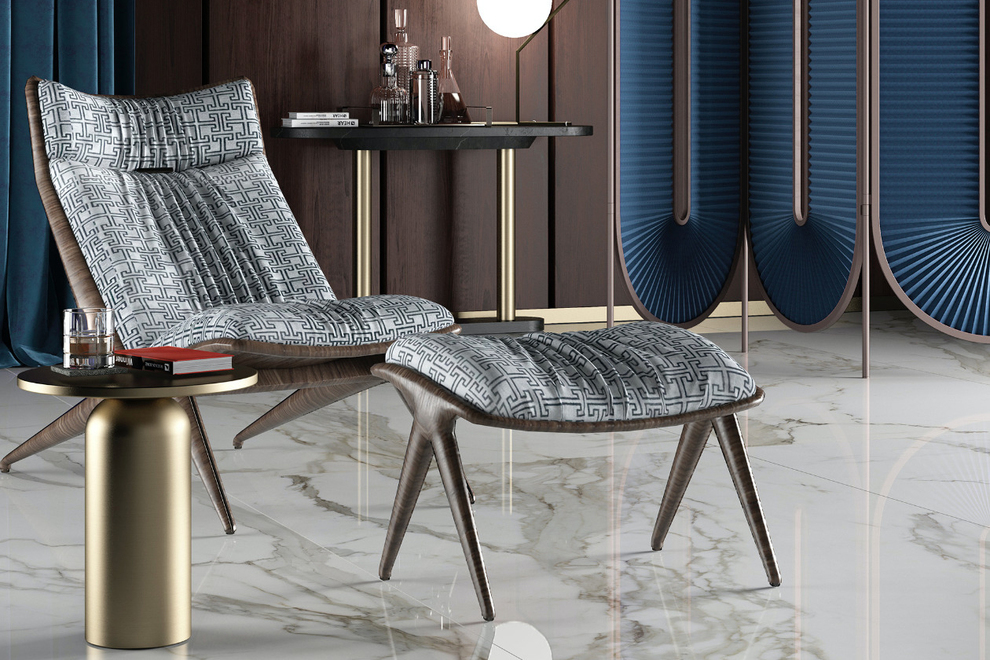
High quality and durability, Carrara marble classes up luxury properties
Form ancient Rome to Michelangelo and monuments around the world, Carrara marble is a symbol of high quality always and forever
Carrara marble is world renowned as one of the highest qualities of marble. It is extracted both from underground and from quarries. The quarry ledges excavated in the majestic Apuan Alps are visible all the way from Versilia’s entire coastline, and the white marble almost looks like snow. Broker Immobiliare Exclusive Real Estate lists luxury villas with exclusive Carrara marble features in Tuscany and Liguria.
This marble is thought to have been used as early as the iron age, and it was called Luni marble (marmor Lunensis) in the era of ancient Rome. It was exported from the harbor in Luni during the reign of Julius Caesar. It is no surprise that this high-quality marble was used for the most famous monuments in ancient Rome, including the Pantheon, Trajan’s Column, and the Column of Marcus Aurelius. The Trajan Column was built with 18 colossal marble blocks, about 40 tons heavy and with a 3.83 m diameter. The Column of Marcus Aurelius has a similar structure, with 27 colossal marble blocks with a 3.7 m diameter.
Michelangelo himself often visited the Carrara quarrie, in order to personally select marble blocks out of which he was to sculpt his works. His first stay was in 1497, when he bought marble to create a work commissioned by the French cardinal Jean de Bilhères-Lagraulas: the famous Pietà. The works that Michelangelo brought to “life” out of marble are several, such as David, nowadays standing in front of the Palazzo Vecchio in Florence, and Moses, housed in the Basilica di San Pietro in Vinicoli in Rome. Even sculptor Antonio Canova often used Carrara marble for his works, such as Theseus and the Minotaur, Venus Italica, Psyche Revived by Cupid's Kiss, and Perseus Triumphant, among several others.
World renowned as one of the highest qualities of marble, Carrara marble embellishes monuments and buildings in many countries, and is especially appreciated in the United Kingdom and the United States. Suffice it to say that this marble was used for both the Marble Arch and the Victoria Memorial, both in London and just around 2.5 km from each other. For the majestic Victoria Memorial monument, standing directly in front of Buckingham Palace, 25 tons of Carrara marble were used. The famous triumphal arch, the Marble Arch, between Hyde Park and one end of Oxford Street, is entirely built of Carrara Marble. Another famous British monument featuring this valuable marble is the King Edward VII Memorial in Birmingham, not to mention the beautiful staircase in the Glasgow City Chambers in Scotland. It is impossible to list all the monuments and buildings in the United States, though some of the most important include the Peace Monument in Washington DC, the Milwaukee Art Museum in Wisconsin, and The Rotunda, commissioned by Thomas Jefferson, in University of Virginia’s campus.
In the era of ancient Rome, workers had to undertake the thankless task of sawing out marble blocks manually. In the following centuries there were experiments with gunpowder explosions, though this method proved to be unfeasible – it damaged the marble crumbling too much of it compared to what was usable after the explosion. However, during industrialization, which expanded across Europe in the 1800s, machinery for marble extraction was finally invented, such as the helicoidal saw (or wire stone saw) and diamond wire saw pulleys, to groove out and extract blocks respectively.
Different kinds of marble are extracted from the Carrara quarries. White marble doesn’t have any vein or grain and comes in shades of ivory, pearly white, or grayish. Grey-veined marble feature grey or white veins. Bardiglio is a subtype of this marble and comes in white or grey with dark veins. Brecciato marble comes in more vivacious colors (red, green, or even purple). One subtype is arabescato marble, which so named due the quartz motifs within.
Broker Immobiliare Exclusive Real Estate lists luxury villas with exclusive Carrara marble features in Tuscany and Liguria.
